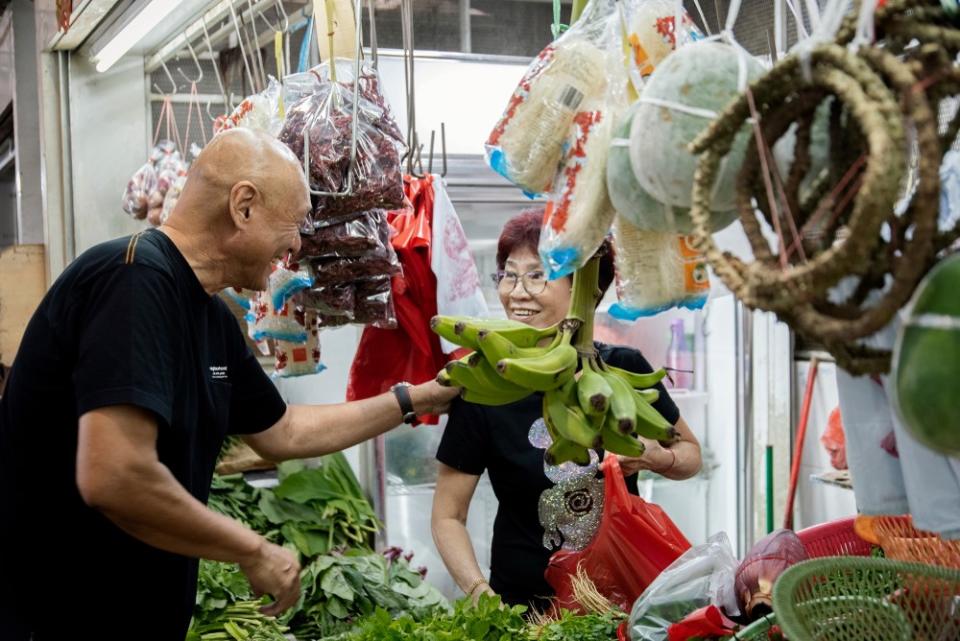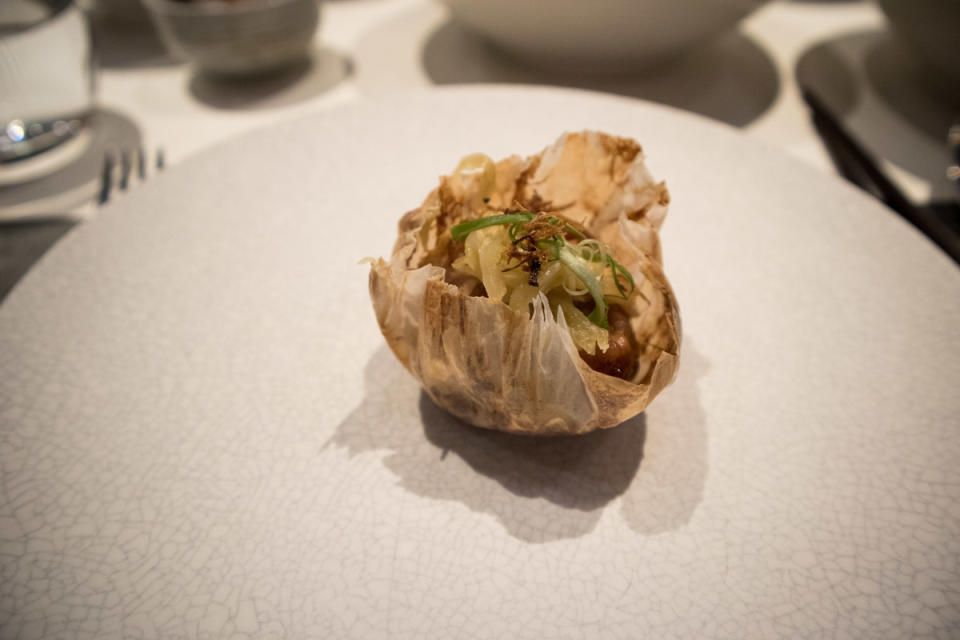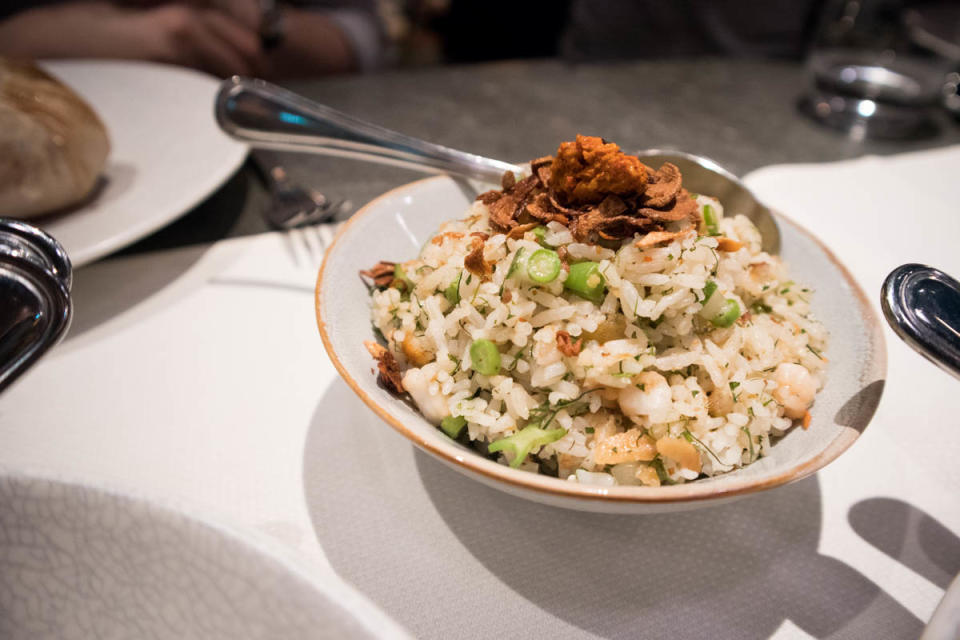INTERVIEW: Chef Damian D’Silva of Kin on exploring identity through heritage food

SINGAPORE – I don't know anyone in my circle of food lovers who don't know of Chef Damian D'Silva or his fight to keep heritage Singapore food alive. He uses his clout as unofficial custodian to good use—spreading the gospel of reverence for food that fed our ancestors, and in so doing, the nation, every which way he can. For some people I've spoken to in interviews, identity is an important, almost crucial part of their psyche. And in some ways, it's the same for chef Damian, except that his exposition of identity is through the medium of food.
It is an identity he carries off with aplomb. He stands tall, statuesque, and at times, immovable even as he fleets from restaurant to restaurant in search of the next big thing. His latest project is Kin—a partnership with the inimitable Lo & Behold group—housed within the confines of Straits Clan Club. Today the restaurant is quiet, save for the palpable excitement in the air—like a low pitched buzz sweeping over every inch of your skin. This opening heralds a new chapter for the still sprightly 63-year-old chef, on a mission to ensure that the fate of Singapore heritage cuisine does not fade with time.
READ MORE:
Malaysian-style Nasi Lemak lands in Singapore
FOOD REVIEW: Go Noodle House from Malaysia opens at 313 Somerset for a slurping good time
7 Chinese New Year feasts to usher in the Year of the Rat

Why did you decide to leave Folklore?
I left Folklore in April this year. Why? I had to move on. Everybody moves on, right? I think I've already spent enough of my time at Folklore. I've reached the apex of what I can do, and I felt it was time for me to leave and create another milestone. But I know I needed to work with the right partners, and I thought that the Lo & Behold Group was the perfect fit for me. I wanted to move a step in the right direction.
Do you worry about legacy?
What do you mean to worry?
You're at this point of time in your life where most people would generally be concerned about what they're leaving behind for the next generation. When you were in Folklore, did it not feel like that would be it? That, that would be the legacy you're leaving behind.
If you put it that way, what you're implying is that I've done all that I can and needed to at Folklore. As far as I'm concerned, yes, I have left a legacy there. And that will persevere if the staff remains and continue to cook the way I've taught them. Nothing will go wrong because the recipes are there, and the people I've taught are still there. My promise to the owner is that if anything happens to me tomorrow, the restaurant will survive.
If the staff I've mentored leaves, then, there's nothing much I can do about it. I know that I've fulfilled my role to the best of my ability. Now is the time for me to move forward, to a different level. I don't want to go back and do the same thing I've done in the past.

How would you best like to be remembered?
I don't want to be remembered as the person who helmed Folklore or Kin. The place where I'm at is not the most important. I want people to regard me as the person that has done Singapore proud by executing dishes from all the different ethnic races here. Singapore heritage food is not only Chinese or Malay or India or Peranakan. It's a combination of all these different ethnic races. It's my respect for cultural heritage that I want people to remember me for. So that when the younger generation talks about heritage food, it's not merely in terms of individual cuisine but as a culture of communal dining between races. I think that's what's important.
Why is communal dining important such an important part of food for you?
In this age and time, I've come to realise that when it comes to food, there's unwritten segregation that divides the community. Growing up, I'm around neighbours of different ethnicity, race, and religion. My aunts were Muslim, so when I went to their homes during Hari Raya, I ate with my hands and sat down on the floor together because that's how it was like before. Then when they come to my house, they would sit at the same table as us, but my mum would put the pork away at a different place away from them because she understands their sensitivities. There's no fear of going to anyone's house and worrying that they won't cater or respect your religious dietary requirements. I'm a big purveyor of eating communally to improve cohesion. There shouldn't be a divide across food.

You've spent years educating the public about the need to preserve heritage food. Do you still think it's a fight worth fighting?
For me why I think it will always be in my blood is because of how I started. I don't just cook one type of cuisine. But because I cook from the entire range of culture in Singapore, I'm able to understand the different races much better. I can also place them in isolation and put them together quite quickly. Take, for example, Mee Siam. The Chinese cook it. The Malays cook it. The Eurasians cook it. The Indians cook it. The Peranakans cook it.
But they all cook it differently. We do it in our way, and we don't really care where it originates from. The resulting dish is a vibrant mixture of the different ways everyone else cooks it. It's the same with Rendang. Even within the Malay community, there are different types of Rendang. If we don't preserve this, this culture and heritage, what food culture do we have as Singaporeans? Fish and chips?
There are leaders in the food community scene in Singapore who are very proud of our hawker culture. Is that not part of what we can offer in terms of heritage?
Really? Do we have a hawker culture? What is a hawker culture? Mee Goreng? Kway Teow? Chicken rice? The question is, is that what you eat at home? People don't realise or understand that hawker food fed the working class in the fifties. It was a way for hawkers to ensure that their children are well-fed and can be sent to school for education. Why? So that their kids won't have to do what they are doing for a living. Hawkers were the one that fed the nation.
It's different now. Hawker culture is thriving because people don't have the time to cook. And they don't have to think about what they need to cook. Hawkers in the fifties close up at about 5pm. So people ate at hawkers for lunch but had dinner at home. Sometimes they work overtime and come back only at 7 or 8pm, but they still ate at home. Now, eating at home is such a rare occurrence. This is why cuisine that comes from home cooking is slowly disappearing.

How do you see Kin as part of the solution?
I want people to remember what our forefathers ate in the past. You come to Kin, there's food that will bring you back to the time of your grandparents and great-grandparents. Here, I want to embrace diversity. For example, we have ulam. But there's no such thing as a right ulam or a wrong ulam because everyone's ulam is different from home to home. Growing up, my grandfather's Chinese cuisine is very Cantonese style because his friends were Cantonese. It's not right or wrong. It's just the way it is. The food here is not the right or wrong version of a dish. It's just my version of this dish as I know it, based on personal recipes from my family and my memory growing up.
When you look at the state of the dining scene in Singapore today, what's the one thing that gives you hope?
Restaurants that are opening up. That gives me hope. Of course, some make, some don't. You know, I have friends who told me that when you go to Japan, you can't get a bad meal. Even at 7-11, you can't get a bad meal. Last year, I went to Japan, and I got a bad meal. And it was in Tokyo. It was Spanish food, and it was terrible. So what does that tell you? This is a restaurant run and owned by Japanese, and they're cooking food they're not familiar with.
It's the same for restaurants in Singapore. How many restaurants in Singapore are there where you can find people who know exactly what food they're cooking? Not many. Let the Thais do Thai food. Let the Viets do Vietnamese food. So why don't we do Singapore food that's really good that we can be proud of? Because that's what we need. The more local restaurants that open serving great heritage food, the better the chance of keeping our heritage alive.
Kin is located on 31 Bukit Pasoh Rd, Straits Clan Lobby, Singapore 089845. For reservations: straitsclan.com


